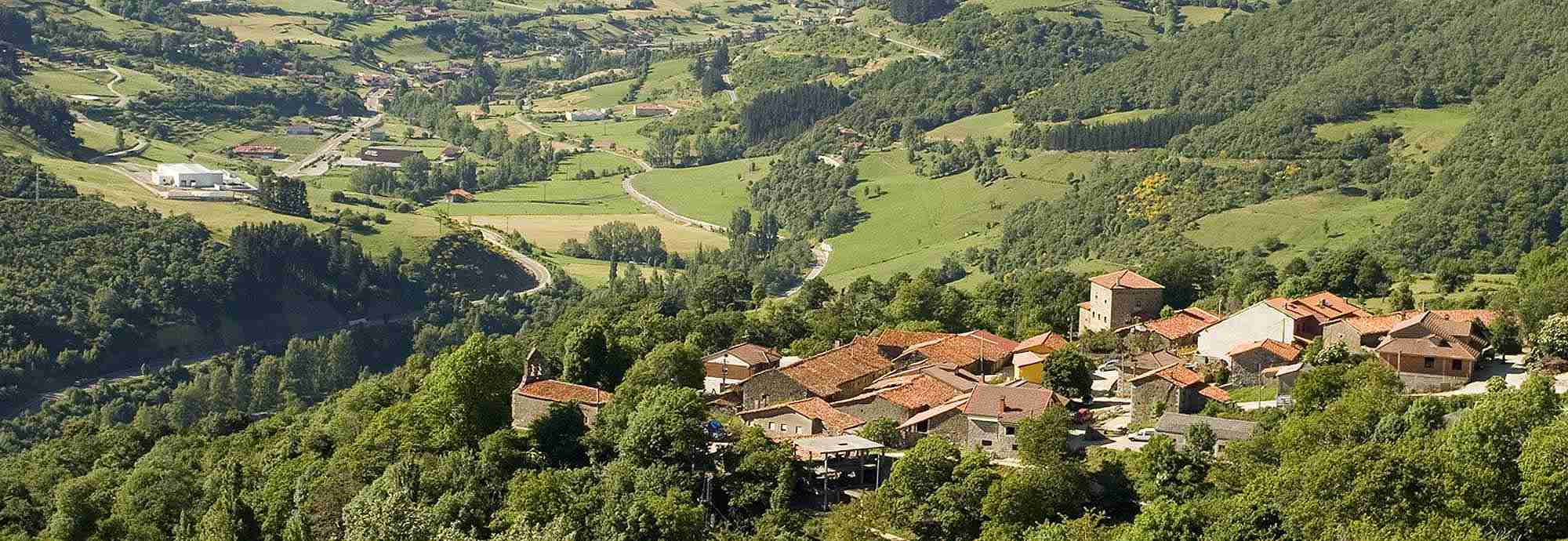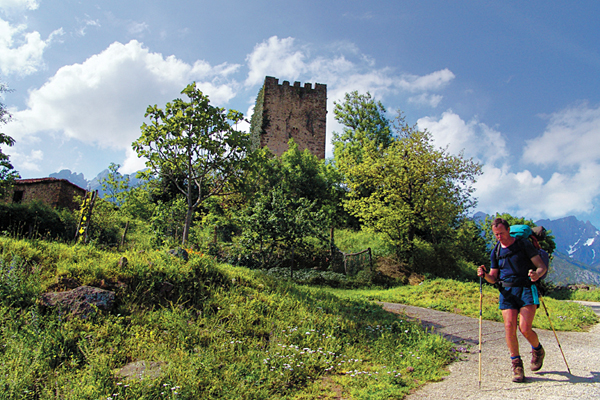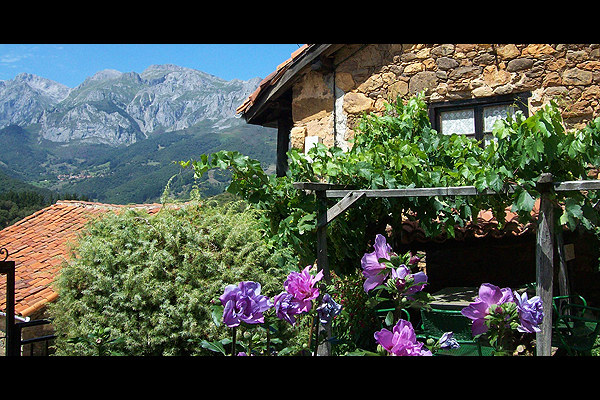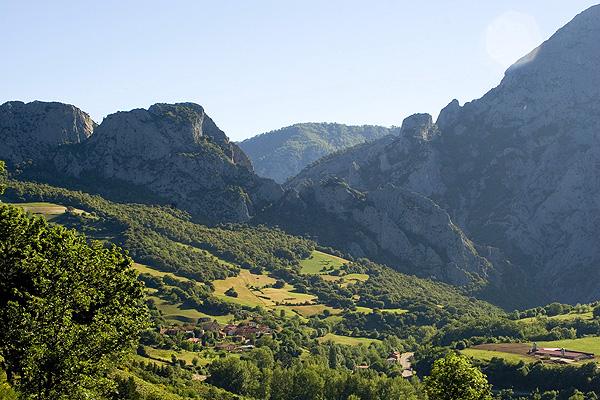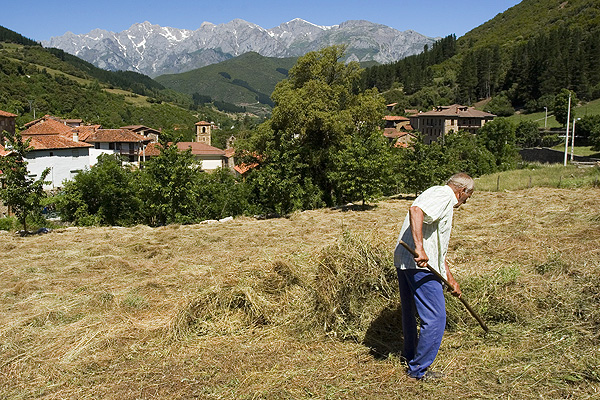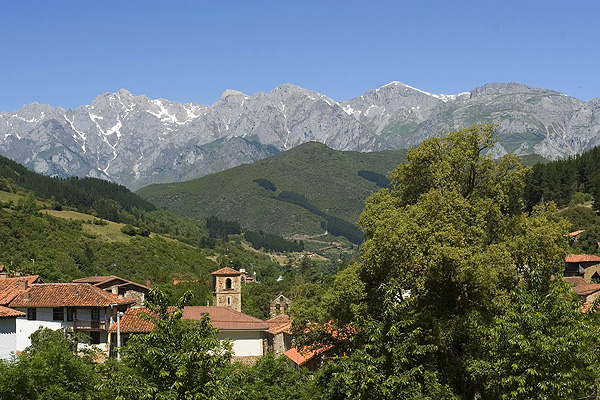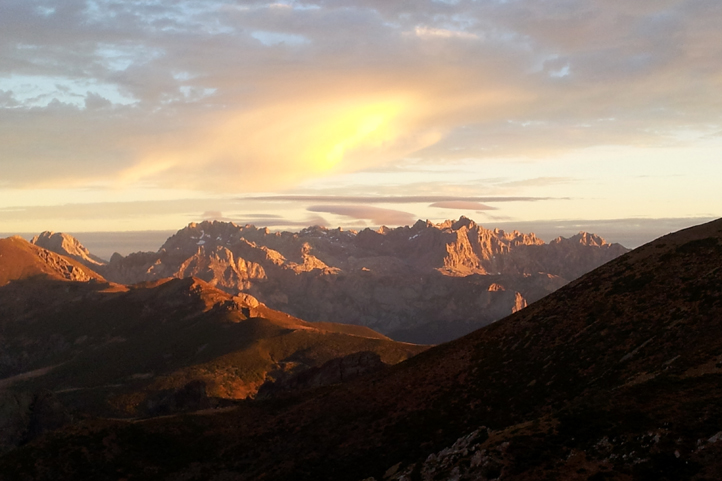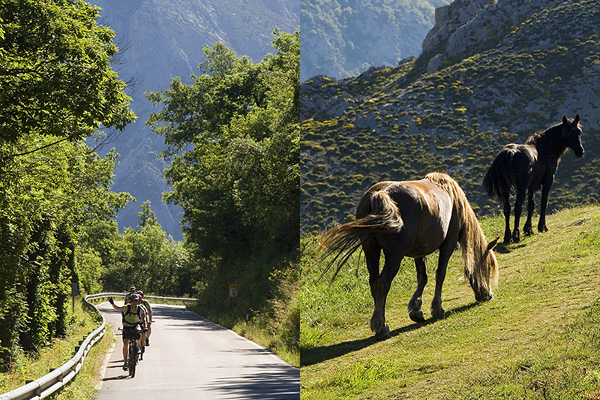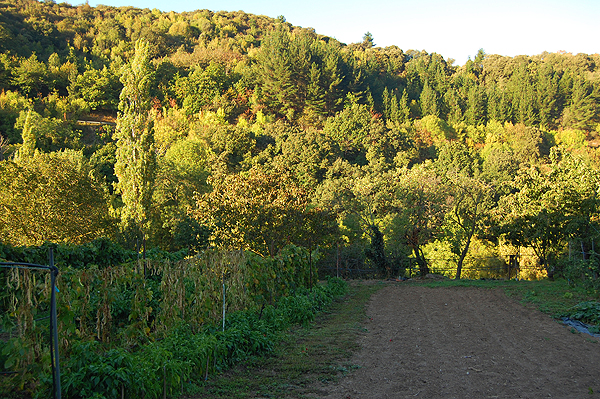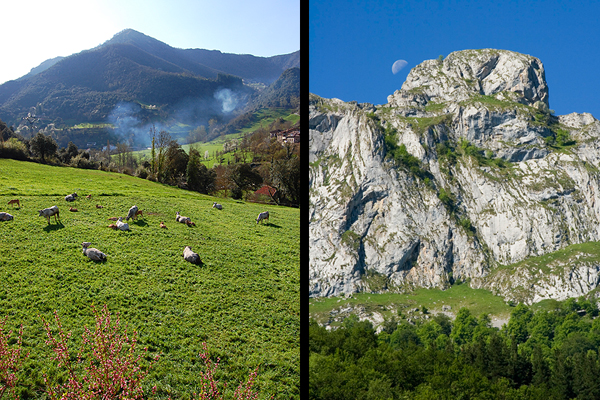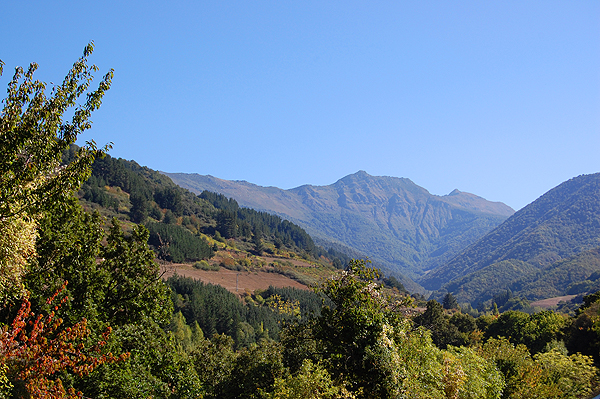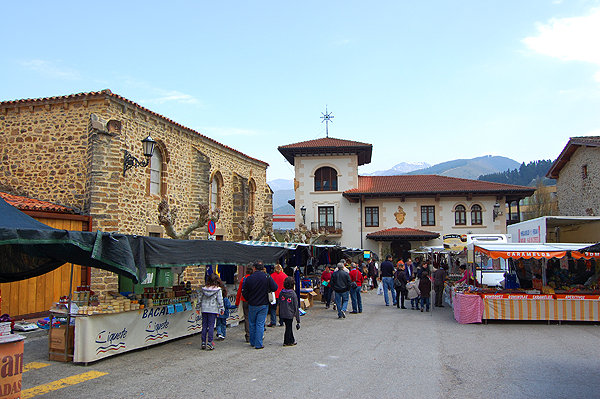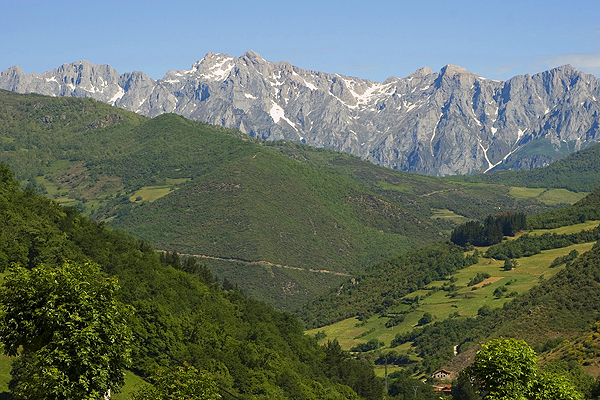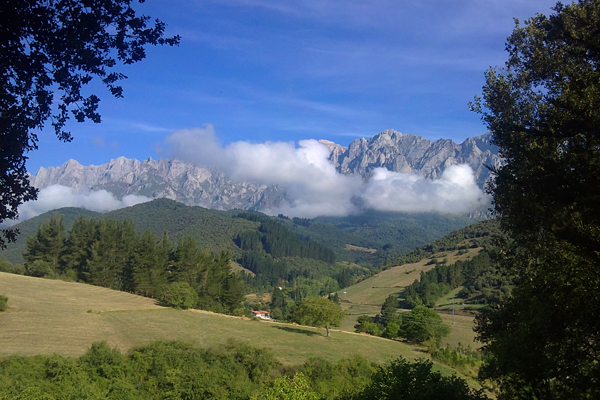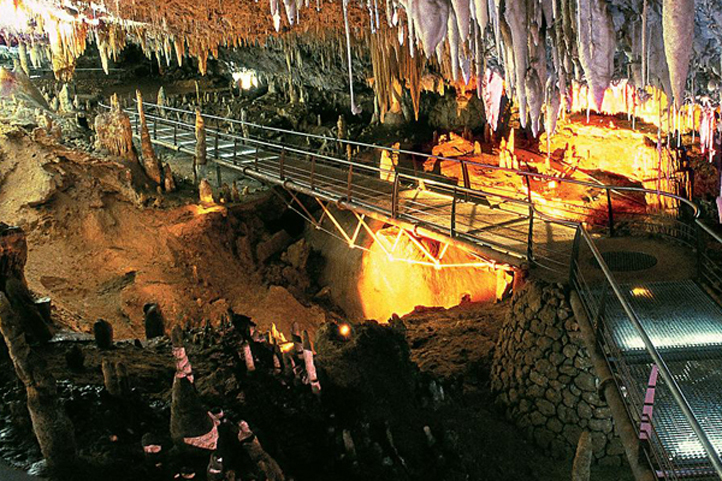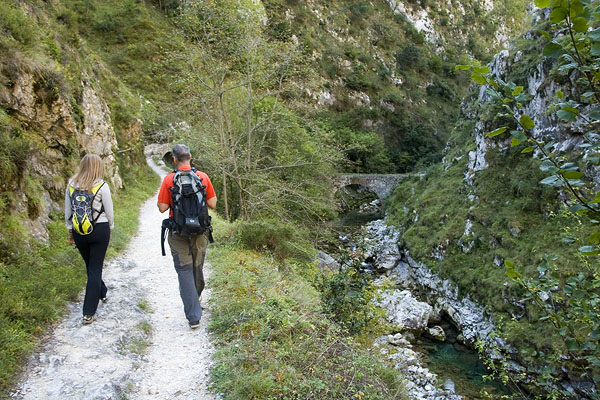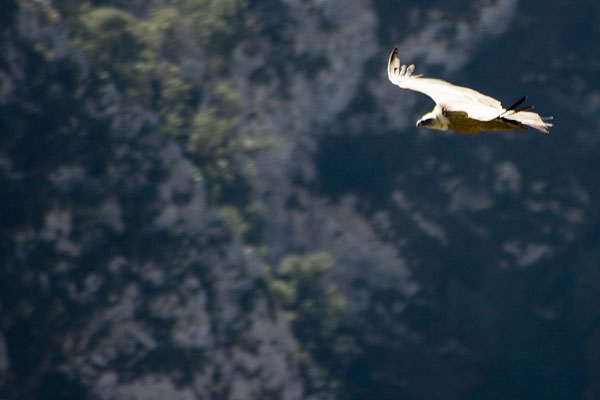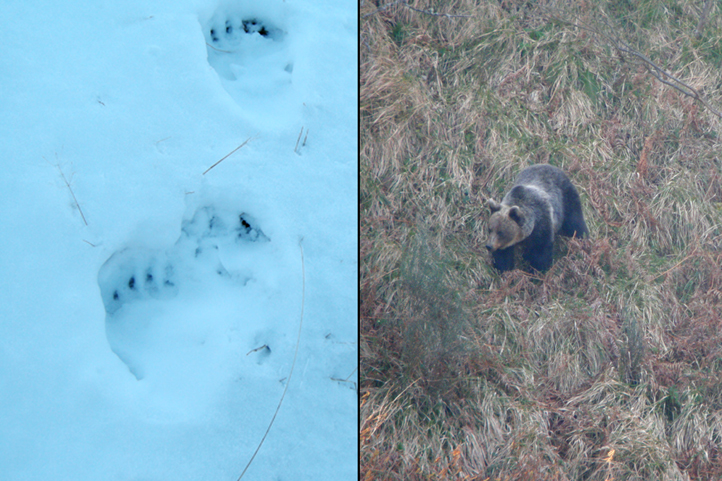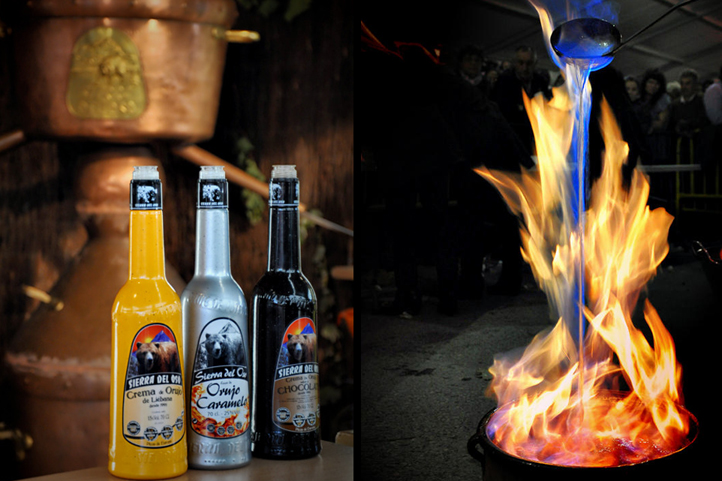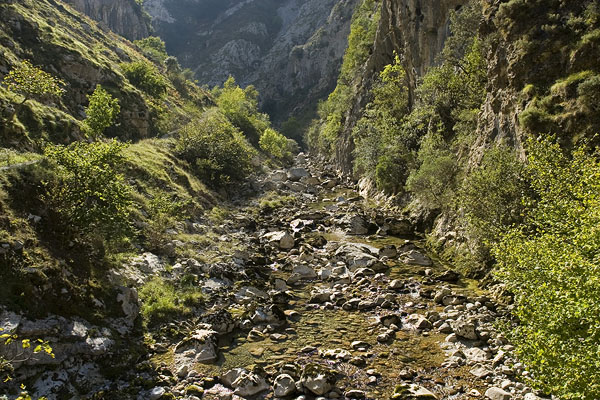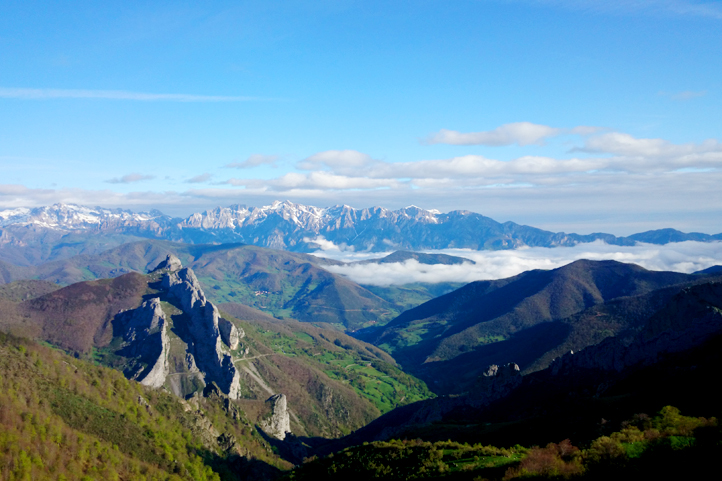To get your bearings and experience a bit of local Spanish life, we suggest you visit the small town of Potes, which is the regional capital for Liébana. It's also where you can do all your food shopping, find banks, maps, guide books in English and other European languages, and all manner of interesting shops and souvenirs.
There are also a number of agencies offering adventure tourism, with canyoning, horseriding, 4 x 4 trips and mountain biking among the favourites. You might like to try zip-lining (flying fox) traversing through the oak forest canopy in the Sierra El Robleu.
For children who want to try out this aerial adventure, there's a kiddies zip line at the bridge in Potes.
The street market in Potes – held on Monday morning – was originally medieval and is said to be the oldest in Spain. The town itself has some interesting old buildings.
The Municipal Tourist Office is in the bus station and opens 10 am – 2 pm & 4 pm – 6 pm every day. Free WiFi is available at certain cafés and with 3 computers with free internet are open to all at the public library.
If you're planning to have lunch in Potes, bear in mind that there are some very ordinary restaurants serving meals unworthy of Cantabria as a whole. We had to search round quite a lot before we could find places we could recommend: but the options we found are very good ones and we list them under the Food & Drink section below.
Although you may just want to shop for food and then cook it at home, in the comfort of your holiday home. As a suggestion, you could go to Carnicería "Juanito" (local butcher) and ask for local beef (ternera de la zona). This butcher is also an unpretentious delicatessen and we like it a lot. They normally have excellent local beef. We also recommend you try local cecina: this is locally air-cured beef, slightly smoked.
There is also a nice gentle stroll in Potes if you walk from one the bridges down by the river bank. This is a 1.5 km track and during your walk there are points where you can access the streets again if you want to make the stroll shorter. It can be very pretty, although we didn´t find the walk by the river as clean as we expected.
WALKS
(Easy, medium and challenging!)
Hiking is the main activity and reason to come to the Liébana. And for good reason: you really are spoilt for choice. In fact, the possibilities are so numerous that it can be confusing. Here we would like to explain the major and most enjoyable options.
Tama & Cillórigo ancient forests, close by the National Park of Picos de Europa (easy)
Just above Tama, the wonderful Pendes forest is ideal for lazy walks and families with small children. Pendes is a little village, surrounded by tremendously old chestnut trees, some of them many hundreds of years old. We suggest a picnic by the ancient chestnut forests of Pendes. Pass Pendes village and further up you should be able to find a good spot with superb views. There are meadows here, too, and it's simply a beautiful spot to stroll. You may see wild orchids, alpine newts, Pyrennean chamois, wild ibex and the European Griffon or smaller Egyptian vulture. Kids can discover amazingly ancient chestnut trees, some of them huge and hollow, perfect for playing hide-and-seek.
If you don't bring a picnic and want to eat out, we can suggest a couple of places for lunch (see Food & Drink).
Pembes to Cosgaya (easy)
From Potes, one road leads out west through the Valdebaró valley via Camaleño to Fuente Dé. As it meanders through the valley, following the course of the River Deva, the road passes by a succession of well-preserved, pretty villages that you will see dotting the hillsides. Pathways often join one village to another and represent opportunities for good hikes in this very attractive natural landscape. Our recommendation is the route between Pembes (not be confused with Pendes above!) and Cosgaya which crosses the river along the way.
From Dobarganes village to Pico Jano (1 hr 30 mins, easy)
From Potes to the village of Dobarganes takes 20 minutes. Drive south on the main N-621 and you will see the turning on your right to Doberganes. Park near the very first house you come to in the village. Go up the track on the left with a sign to Pico Jano. Keep to the main track all the way to Pico Jano. The views from the summit are fabulous. A good place to eat locally after your hike is to be found further on in the village of Vega (10 mins back towards Potes). Vega has a Mesón (restaurant) which offers very decent food.
From Urdón to Tresviso (2 hours 30 mins, medium difficulty, 800 metre ascent)
Another walk ascends to the high village of Tresviso, famous in Spain for its spicy cheese, on a two-and-a-half hour route that follows a clear, rushing river then climbs past giant ferns up through a fabulous and craggy landscape to a cliff rest point, home to a colony of Griffon vultures, where the views are an adrenaline-rush!
The road into Liébana from the north through the defile of the Desfiladero de la Hermida enters the region at Urdón (17 km from Potes). From this glen, where the clear waters of the Urdón River gush into the River Diva, a terrific hike of two-and-a-half hours ascends to Tresviso. To the right of the hydro-electric generating station, there is a house, an old mill and a bridge: the pathway starts here, where you see the metal railings. You proceed along the river (you may see trout) with riverbanks bearing willow, hazelnut, lime and wild plum. You cross two bridges (the first probably Roman) and pass through a zone with exuberant ferns.
The winding path continues to a place called La Vargona, where the path crosses over through a series of stepped turns. At the conclusion of the Vergona, you will come to a flat area with an electricity pylon, from where you can see the easter massif of the Picos de Europa with Pica Macondiu, also the River Urdón threading down through the gorge below. You will now have walked for about one hour, nearly half the distance.
Soon afterwards, you come to Balcón de Pilatos, where to the side of the path the "balcony" is a ledge at 645 metres with a vertical rockface that will set the stoutest heart beating. A colony of Griffon vultures roosts here. Further on (after another pylon), you'll come to a fountain of fresh water where you may safely slake your thirst.
You now undertake the last part of the hike up a gully to Tresviso village (890 metres, having started out at 75 metres), where simple local hostelries cater to the hungry and thirsty. The return is by the same route.
From Fuente Dé to Liordes (challenging, 5-hour circular route)
This is one of the best routes in the area. Note that you should provide yourself with a good walking map (available in Potes) for this itinerary, for which we give a broad outline here.
It starts at Fuente Dé, but instead of taking the cable car up, you depart from the car park at the lower lift station at 1,078 m. Head left to where the forest starts to take the path up to a crossroads at 1,250 m and then turn left. The path climbs steeply up the mountain, winding up and up to Liordes "saddle", or mountain pass, at 1,941 m. The views as you go up are extraordinary. On the other side of the pass is a mountain hut open all year round and 40 metres away a fountain of fresh spring water. You'll see evidence of old mining activity up here. A different descent winds back down to Fuente Dé and for this you will need a detailed map.
FUENTE DÉ CABLE CAR
It's impossible to spend long among the Liébana Picos and not want to go up into the mountains! Well, it's very easy. A half hour's drive from Potes brings you to Fuente Dé, from where a cable car rises to a heady 1,800 metres. It's an impressive ride that leaves you up top, amidst amazing alpine scenery, looking out at bare rock face and snow resting on the jagged peaks, another world completely from the mild valley below.
Well-signposted walks lead off from here for those who want to explore: the Picos de Europa lie before you for some terrific high altitude treks. Many simply enjoy the views and take the cable car back down again. Taking the cable car at Fuente Dé is one of the classic Liébana activities. Not to be missed, unless you suffer badly from vertigo! A return trip costs about 15 euros for adults (last updated 2014).
VISITOR'S CENTRE FOR THE PICOS DE EUROPA
As you enter Liébana from the north and before you reach Potes, you pass by the village of Tama, sometimes marked on maps as Cillorigo de Liébana. Here you will find the Visitors' Centre for the Picos de Europa. It opens 10 am – 1pm & 4 pm – 8 pm. Closed Tuesdays & Sunday mornings. We suggest you take advantage of the opportunity to get to know a little more about these wonderful high alpine mountains.
A BIT OF HISTORY AND VISITING HISTORICAL SITES
To delve a little more into Liébana and make it more rewarding, we recommend you read up about it, as it is very interesting to learn about the local architecture. Sometimes, there are legends and stories associated with the places. The traditional culture of the Liébana has the popular character typical of outlying rural areas. If Catholic rites were and remain the mainstay of social activities at village level, they were embellished by local customs as well as myths and legends passed on orally in story and song, especially in winter months when families would gather round the kitchen hearth.
Folksongs, occasionally bawdy, would accompany church weddings, and the groom would make a gift of jugs of wine or a roast lamb to the young men in the village his bride-to-be was from.
Christian tradition is maintained in local romerías, or devotional pilgrimages, on which villagers gather together to walk to holy sites or carry an image of the Virgin. They may wear traditional dress, sing and if the distance is considerable take food and wine for a picnic. Easter Week is also marked by processions.
Folklore is kept alive at annual village fiestas in dance and song and the occasions are fêted with marvellous and typically generous Cantabrian cooking. Architectural culture is similarly expressed in popular and ecclesiastic forms. Dwellings are still charmingly constructed in stone and wood ensuring an unbroken line of heritage style, the new fitting seamlessly with the ancient. On casual strolls around the villages and hamlets of the Liébana you can see examples of old village bread ovens and pillared grain stores, now protected listed buildings. For visits to significant historical monuments, we suggest these outstanding edifices:
Santa María de Piasca
In the village of Piasca, this church is one of the local architectural jewels. Easy to find. The Gothic interior that is particularly memorable. There is a beautiful illustration of the adoration of the Three Wise Men. A superb Limoges crucifix, normally kept in Santillana's Regina Coelli museum, is brought to the church for the Holy Week services. You could combine visiting this church with going to Vieda for lunch (see details in Food & Drink below).
Santa María de Lebeña
This delightfully harmonic, pre-Romanic church is situated on a rise outside the village of Lebeña, where it has pride of place among vineyards, meadows and planted fields. Its history extends back over 1,000 years. The front of the main altar is a single, massive stone that once formed part of the flooring. Found during restoration works in 1971, it depicts a wheeling sun symbol and may once have been a Celtic stela.
Monastery of Saint Toribio
The major edifice in Liébana is the monastery near Camaleño, 3 km from Potes. Its prize exhibit is the Lignum Cruce, said to be the largest single surviving piece of the True Cross. Who knows? When Madrid's Forestry Research Institute carried out tests in 1958, it determined a possible age of 2,000 years and a composition of Mediterranean cypress, common to Palestine. The Monastery opens to visitors every day. To get there, take the road from Potes to Espinama and Fuente Dé. A turn-off to the left takes you to the monastery after just 2 km.
San Vicente de la Barquera
San Vicente is the nearest seaside destination for Liébana, less than an hour's drive. We suggest visiting this beautiful fishing town and perhaps walking by the port towards the pier, passing the Virgin of the Fishermen statue where you may be able to see snowy Picos behind. We recommend the walk up to the old church and castle, where the views are also superb. San Vicente has its own beach.
Natural Park of Oyambre
Oyambre, close San Vicente de la Barquera, is a protected area of dunes, beaches cliffs and forests. There is not much infrastructure and you need to be intuitive, but it's quite easy really: just park the car and use one of the many paths to discover the area. As soon as you arrive at San Vicente take the bridge to your right to cross the estuary. When you pass the bridge, immediately turn left and then right towards Playa Guerra and up the hill. You will soon reach the Oyambre park area.We like the little chiringuitos (beach bars) around Oyambre, but bear in mind in peak season this area gets quite packed.
BEACHES
The "secret" Rustical Travel recommendation is that you cross over from Cantabria into Asturias: the most interesting beaches are there. The drive takes approximately 1 hour from Potes. Why? For beautifully natural beaches, relatively safe for swimming compared with many others in Northern Spain. From Unquera, the border is very close by and so is the first beach: La Franca.
La Franca beach (and undiscovered beaches next to it). When you reach Unquera, take the motorway towards Asturias and you will soon cross the village of La Franca. As soon as you pass La Franca, drive slowly and indicate left as the left-hand turn-off for La Franca Playa (beach) is quite sudden. La Franca is a wonderful, large beach, with fine sand and good water quality. When the tide is high, it becomes like a large natural pool that can be relatively safe for children.
When the tide is low, it offers the chance to walk to the fantastic Playa del Oso, off to the right. This is an off-the-beaten-track beach for nature lovers. It can also be accessed by a path from La Franca main beach but could be a challenge to find. El Oso is delightfully secluded and we recommend it to the more adventurous who want to avoid the main beach (La Franca) when it is busy.
As an additional option to Playa del Oso, and also next to Playa La Franca, we also recommend an exciting and undiscovered beach. It's called Playa de Mendia (also known as Regolguero) which has a steep access from the village of Pimiango. To go to Pimiango you turn right from the main road before you reach the village of La Franca.
BEST OF THE REST
FEVE train
If you go to the coast and fancy exploring by train, the narrow-gauge FEVE train is a big hit with many visitors. It runs all along the northern Cantabrian coast and continues west to Asturias and east into the Basque Country. It's pleasant, cheap and efficient, and you can get off at interesting fishing villages and beach destinations.
Cabarceno Nature Reserve
Just ten minutes from Santander, Cabarceno makes for a great day out. It's quite an experience to see lions, gorillas, monkeys, elephants and rhinos in Northern Spain. The environment is a natural one of some 750 hectares, where the animals live in a significant degree of freedom and safety. Mini-safaris, demonstrations of bids of prey – and the chance to see Liébana's most honoured, but shy and endangered denizen: bears!
Soplao Caves
El Soplao, half an hour south of coastal San Vicente de la Barquera, offers a terrific cave experience. Here it is nature not man, that creates the spectacle in the form of extraordinary speleotherms throughout 17 miles of galleried caves. Pass through the immaculate white stalagmites of the Gallery of the Ghosts and the colourful Gallery Genesis, or peer into the Gallery of the False Floor. There are 17 kilometres of cave in total. Two different types of visit take you inside either on an old mining train and then by foot to one of the largest chambers; or a longer and more exciting tourism-adventure visit on foot (12 years and over), for which you are provided with boots, overalls, helmet and lamp. Visit elsoplao.es
Playa del Cobijeru beach
Regarded as a Natural Monument, when you drive west from Unquera, after passing the village of La Franca, next comes the village of Buelna. From here there are signs to Cobijeru.
From where you leave the car, you have an easy walk to this natural beach set in a dip below fields connected to the sea by caves. You can access this beach from a cave (you need torches) or along a track that leads you to the beach. The cliffs around here are most impressive.
FOOD AND DRINK
As everywhere in Cantabria, expect to eat heartily and well. The people are proud of their gastronomy and will make sure you don't leave the table hungry. The local chickpea stew or Cocido Lebaniego (famous dish from Potes), will set you up nicely for an afternoon's ramble.
Hearty stews, salads and a variety of cheeses alternate with fish and seafood from the nearby coast. Food is taken seriously here. There are weekend country inns where kitchens are constantly busy with clanging pots, hurrying plates out to hungry wayfarers.
Tudanca beef, lamb and wild salmon are as common in mountain dishes as lima bean and tender chickpea soups. Try sirloin with Tresviso cheese, hake in parsley sauce, chorizo, anchovies, squid with onion, and Pasiega cheesecake.
Tresviso – or Picón Bejés – is a blue cheese matured for months in local limestone caves, presumably ones chosen for their absence of bears.
Orujo de Liebana, made from winepressings, is the local, fruity brandy, a strong digestive liqueur. Cider (sidra) is not emblematic in local culture as it is in neighbouring asturias, but still much enjoyed here.
If you are planning to self-cater, for a main shop, there are fairly large supermarkets as you pass the village of Tama on the way to Potes.
Potes:
It is busy in peak summer season and many places serve average food, burgers, pizzas...but you can still find decent places offering traditional food. Countryside and villages restaurants tend to be a better option. It is common to find the menú del día (a set menu), but sometimes you have to ask. Otherwise they give you la carta, so you can choose your dishes.
If you are looking for a special place to have a meal in terms of views of the Picos (and the food's good, too!), we thoroughly recommend:
• El Balcón - It is accessed from the road that goes up the hill just behind the Tourist Office and the church. It can be seen just behind Potes, slightly over by the hill.
Other options in the area:
• Asador Llorente - Located on the first floor of an old building in Calle San Roque. It feels cosy in its upstairs restaurant. We tried local beef here and it was very good.
• El Bodegón - Also in Calle San Roque, offers some excellent dishes based on local ingredients in the dignified setting of a an old stone building.
• Las Mañanitas - If you want something different to traditional cuisine, this authentic Mexican restaurant is a new venue and has been given the seal of high approval by our local agent (tasty dishes and a growing reputation for excellent service). Calle del Obispo, 1.
• La Venta de Vieda - Just 3 km from Potes, in the small village of Vieda. They have outdoor areas for meals al fresco. Although fish is not a traditional dish in this mountain area, we are told fish dishes are good at this restaurant. On the road from Potes to Cervera Pisuerga. You can combine a meal here with a visit to the Romanic churches of nearby Combarco (arustic 8th century cave-chapel), or Piasca.
• Casa Cayo - Very popular with locals, Calle de la Cantabra, 6.
Rustical Travel tip: Live like a local! Buy delicious cecina (mountain air-cured beef, slightly smoked) in the local Deli shop "Casa Juanito" (Poblado San Roque, 5. Potes. Coordinates: 43°09'16.7"N 4°37'15.3"W) and then buy pan (bread) just opposite.
Another "very local" tip is to ask for Té del Puerto (tea) and a drop of Orujo de Liébana when you finish your lunch.
Which restaurant has the best view in Liébana?
• Casa Lamadrid - It has an extensive menu with all the usual Cantabrian meats and stews. Vegetarians can also be catered to, with dishes based on fresh vegetables and legumes from the restaurant's own market garden. The panorama of the Picos de Europa is unbeatable. In Cahecho village, 10 km east of Potes.
Cider brewery, museum & restaurant
• Sidrería La Retoria - Aniezo. Very close by Casa Lamadrid (above), and just 7 km from Potes in the village of Aniezo, you can see how local cider is made, sample it and, if you wish, have a sit-down meal washed down with it (lamb and cod are specialities). It's a chance to see a genuine working cider production in impressive Liébana surroundings.
Tama, Colio & Pendes area
• Restaurant Fofi - Close to Tama, this restaurant is good value for a fixed price set lunch (menú) or eating à la carte.
Fuente Dé
On your way back from Fuente Dé after a ride on the cable car:
• Restaurante del Oso - Try Cosgaya. This restaurant has a lovely mountain ambience and it has landscape paintings by very well known local 19th century painters (Francisco Nuñez de Losada, for example). On the road from Potes to Fuente Dé at Km 13, just by the Parador hotel).
• Restaurante Vicente Campo - Also close to Puente Dé, we have been recommended this restaurant at Hostal Puente Deva in Espinama village. A The meat and fish dishes (salmon and trout from the River Deva) are said to be excellent.
